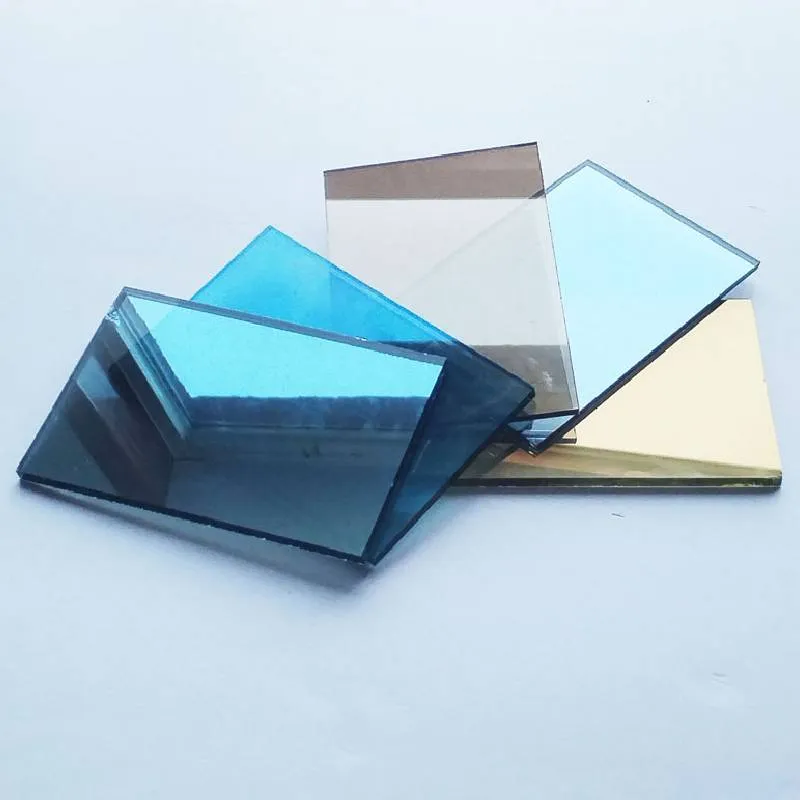The Benefits of Low-E Reflective Glass
In the realm of modern construction and architecture, the materials we choose significantly influence both the aesthetics and performance of buildings. One of the most innovative advancements in this field is the development of Low-E reflective glass. This type of glass is designed to enhance energy efficiency, improve comfort, and provide a plethora of environmental benefits.
The Benefits of Low-E Reflective Glass
One of the most significant advantages of Low-E reflective glass is its role in reducing energy consumption. Buildings account for a substantial portion of global energy use, and improving energy efficiency within these structures can lead to significant environmental benefits. By utilizing Low-E glass in windows and facades, property owners can lower their energy bills and decrease their carbon footprint. This not only benefits the planet but also increases the property's market value, appealing to environmentally conscious buyers.
low e reflective glass
In addition to energy efficiency, Low-E reflective glass enhances visual comfort. Traditional glass can cause glare and uneven light distribution within a space. With Low-E technology, occupants experience a more balanced and comfortable lighting environment. The glass allows natural light to enter while reducing harsh glares that can be disruptive during daily activities. This feature is particularly beneficial in office environments and spaces where people work for extended periods.
Furthermore, Low-E glass provides substantial protection against harmful UV rays. While natural sunlight is essential for well-being, excessive UV exposure can lead to various health risks, including skin damage and eye problems. Low-E reflective glass blocks a significant percentage of these harmful rays while still allowing beneficial light to filter through. This added layer of protection helps to preserve the integrity of furnishings, flooring, and art pieces by minimizing fading caused by UV exposure.
Aesthetic appeal is another important aspect of Low-E reflective glass. The sleek, modern look of this glass enhances the architectural design of a building while maintaining the natural light that owners desire. The reflective properties can create stunning visual effects on the exterior of a building, allowing architects and designers to be more creative with their designs. Whether it’s a contemporary office building or a residential space, Low-E reflective glass can elevate the overall look of a structure.
In conclusion, Low-E reflective glass is a significant advancement in building technology that brings numerous benefits. Its ability to improve energy efficiency, enhance visual comfort, provide UV protection, and contribute to aesthetic appeal makes it an ideal choice for modern construction. As the demand for eco-friendly building materials continues to rise, Low-E glass stands out as a solution that aligns environmental responsibility with contemporary design. Embracing Low-E reflective glass in new or renovation projects not only helps to create sustainable buildings but also fosters a healthier environment for future generations.
 Afrikaans
Afrikaans  Albanian
Albanian  Amharic
Amharic  Arabic
Arabic  Armenian
Armenian  Azerbaijani
Azerbaijani  Basque
Basque  Belarusian
Belarusian  Bengali
Bengali  Bosnian
Bosnian  Bulgarian
Bulgarian  Catalan
Catalan  Cebuano
Cebuano  Corsican
Corsican  Croatian
Croatian  Czech
Czech  Danish
Danish  Dutch
Dutch  English
English  Esperanto
Esperanto  Estonian
Estonian  Finnish
Finnish  French
French  Frisian
Frisian  Galician
Galician  Georgian
Georgian  German
German  Greek
Greek  Gujarati
Gujarati  Haitian Creole
Haitian Creole  hausa
hausa  hawaiian
hawaiian  Hebrew
Hebrew  Hindi
Hindi  Miao
Miao  Hungarian
Hungarian  Icelandic
Icelandic  igbo
igbo  Indonesian
Indonesian  irish
irish  Italian
Italian  Japanese
Japanese  Javanese
Javanese  Kannada
Kannada  kazakh
kazakh  Khmer
Khmer  Rwandese
Rwandese  Korean
Korean  Kurdish
Kurdish  Kyrgyz
Kyrgyz  Lao
Lao  Latin
Latin  Latvian
Latvian  Lithuanian
Lithuanian  Luxembourgish
Luxembourgish  Macedonian
Macedonian  Malgashi
Malgashi  Malay
Malay  Malayalam
Malayalam  Maltese
Maltese  Maori
Maori  Marathi
Marathi  Mongolian
Mongolian  Myanmar
Myanmar  Nepali
Nepali  Norwegian
Norwegian  Norwegian
Norwegian  Occitan
Occitan  Pashto
Pashto  Persian
Persian  Polish
Polish  Portuguese
Portuguese  Punjabi
Punjabi  Romanian
Romanian  Russian
Russian  Samoan
Samoan  Scottish Gaelic
Scottish Gaelic  Serbian
Serbian  Sesotho
Sesotho  Shona
Shona  Sindhi
Sindhi  Sinhala
Sinhala  Slovak
Slovak  Slovenian
Slovenian  Somali
Somali  Spanish
Spanish  Sundanese
Sundanese  Swahili
Swahili  Swedish
Swedish  Tagalog
Tagalog  Tajik
Tajik  Tamil
Tamil  Tatar
Tatar  Telugu
Telugu  Thai
Thai  Turkish
Turkish  Turkmen
Turkmen  Ukrainian
Ukrainian  Urdu
Urdu  Uighur
Uighur  Uzbek
Uzbek  Vietnamese
Vietnamese  Welsh
Welsh  Bantu
Bantu  Yiddish
Yiddish  Yoruba
Yoruba  Zulu
Zulu 

